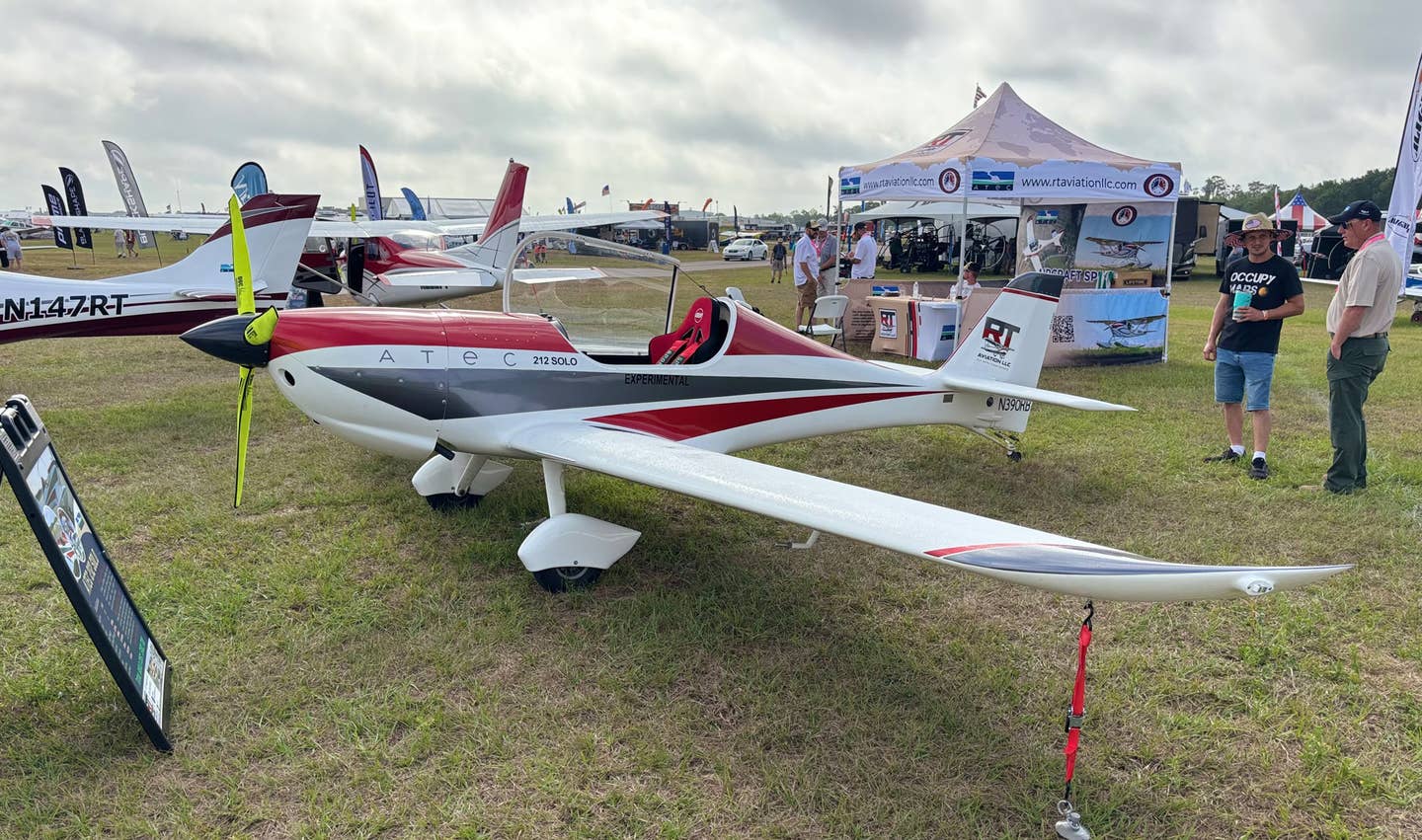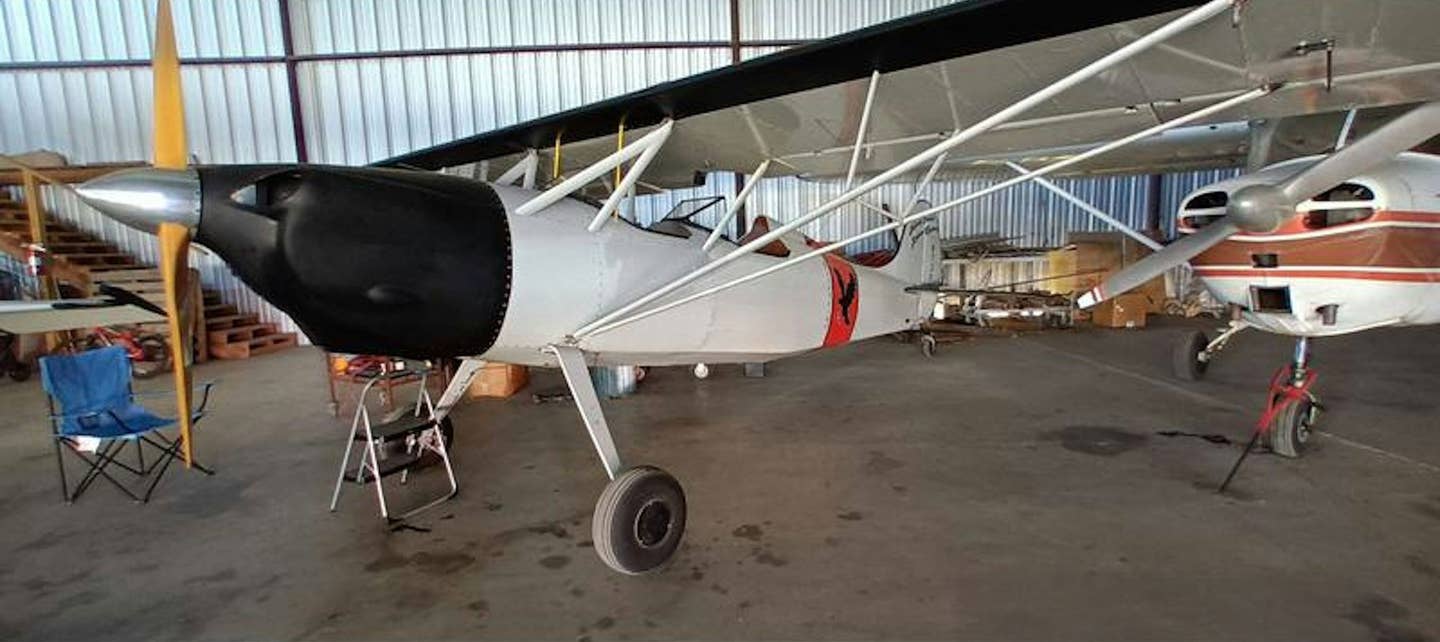The Ugliest Light Planes (That Only Their Owners Find Beautiful)
Most of these aesthetically challenged aircraft have their hidden charms. At least that’s what their fans claim.
Our list from a few years ago of the most beautiful light planes of all time focused on, well, beauty, and we highlighted planes that were sleek and graceful. If there were an airplane equivalent to the golden ratio, said to define human beauty, then those planes were all about that thing.
The planes on this list, not so much. Indeed, if there's any guiding rule in their design, it's impossible to discern, and if anyone does figure it out, we sincerely hope they keep the secret to themselves.
Almost all of these aircraft were designed the way they were for purely practical reasons. Which makes sense. Otherwise, why would anyone intentionally adopt the aesthetics represented here? After all, the 747, which is not on this list, has the hump for its second seating area. The Chinook has its profile that only a mother could love, so it could have two giant main rotors and a big place to put troops and weapons. Try doing either of those two things and still come out with a runway-worthy model of beauty. Can it be done? Can you combine beauty and purpose-built design? Clearly, you can. Just look at the multitudinous business jets that look the way they do because of the things, like wing sweep and area rule fuselage design, that makes them the heavenly chariots their manufacturers advertise them as.
In these instances, the result of the quest for a plane that would do something outside the box was the creation of an odd-shaped box all its own. You won't find any one-off World War I tri-plane light bombers here, either. The defining factor, apart from their ungainly appearance, is that most of these planes were at least fairly successful and produced in good numbers. If nothing else, that's proof that beauty sometimes takes a backseat to more important things, like revenue and utility.
Here are the seven ugliest light planes.
Ercoupe
The Erco Ercoupe was an early 1930s attempt to create a plane that was safer to fly than most of the things that were falling out of the sky right and left that came before it. And while it is exceptionally awkward looking, there are good reasons for why it is. The plane, one of the first successful all-metal light planes, had no rudder controls---the plane's control system mixed aileron and rudder input, so all the pilot needed to do was steer. Various companies produced the Ercoupe over the years, with production ending in 1969 after its makers churned out more than 5,500 of the little two-seaters.
On the other hand:
The author couldn't be more wrong. The tail of the Ercoupe itself is a masterpiece, and while a little awkward looking, there's a lot to love about the Ercoupe's looks.
PZL Wilga
The PZL Wilga, our sole Eastern European listee, was designed to be a sport plane, a trainer, a parachute plane, a STOL utility workhorse, and a glider tug. So this one's a case not of weird design because its creators were trying to make a plane that did one difficult thing but, rather, because they were trying to build a craft that could accomplish approximately 90 different things. The all-metal taildragger holds its nose up high to allow for better ground clearance by a big prop. And its trailing link gear made arrivals on rough surfaces a little less jarring. The Wilga was produced pretty much continually in Poland and elsewhere for more than 40 years. More than 1,000 of them made their way into the hands of customers, too. A particularly impressive Wilga conversion was accomplished by Mike Patey. His creation, Draco, took the cringey angles of the original and went even farther with it, including using a turboprop engine. The result isn't necessarily beautiful, but at least it's a lot less, well, you know.
On the other hand
The Wilga is simply cool looking, all surfaces and angles like it's ready to leap into action. It might not be a 10, but it's a solid 8.
Cessna T-50
The T-50, as fans of the show might remember, was the first airplane owned by the hero of the popular television show Sky King. It was also Cessna's first twin, and looking at it and the materials it was constructed from, it's clear that the T-50 was transitional technology, helping pave the way for Cessna, and Sky King, to move on to the new all-metal and decidedly modern model 310. The Bobcat's snub-nosed look and its almost completely retractable landing gear, coupled with plywood-covered structures and big round engines, give it a decidedly 1930s appearance. Despite it being outmoded at delivery, the twin was a big success for Cessna. It sold more than 5,000 of them, mostly to the United States armed forces.
On the other hand
Like many aircraft from its era, the T-50 was captive to the materials and components available. Its workmanlike balance and presence gives it a handsome familiarity, like that favorite old car that's dated but still beautiful.
Cessna 337
You've noticed that a lot of these planes were purpose-built, and this one is no exception. Except you probably know what that purpose was. The 337 SkyMaster was Cessna's answer to the question, "How do you make a light twin that isn't prone to loss of control following an engine failure on takeoff?" The answer was, put one motor on the front and one in the back. The Sky-Smasher had its strengths. It did what Cessna designers set out to accomplish. It wasn't a lot safer than other twins, and it was loud. But all in all, it wasn't a bad plane. It carries a good load, it's a decent cruiser (around 160 knots for the non-pressurized version), and it does have that second engine. Cessna built almost 3,000 of the push-pull twins, and, if we're being honest, it's not as ugly as it might have been. So kudos to Cessna for that.
On the other hand
Granted, when its gear is extended, the SkyMaster has a lot, perhaps too much, going on. But when it's all cleaned up and cruising along, the venerable Cessna push-pull twin is remarkably sleek and powerful looking.
Piper Tri-Pacer
The Piper Tri-Pacer is the answer to the question, asked by Piper back in the day, "How can we build a nosewheel four-seater without designing a whole new plane?" Easy. Put a nose wheel on a Pacer. The result is an aircraft that files okay, carries four svelte friends, and doesn't cost a lot. But it's not fast, and, well, look at it. It's a profile that only a mother could love. But it is much beloved by its owners, which is true for just about every plane on this list. And the Tri-Pacer was very popular. During its 14-year production run, Piper turned out nearly 10,000 of them.
On the other hand
For an airplane that's supposedly unattractive, the Tri-Pacer, sometimes derided as the "Flying Milk Stool," is the subject of some of the most beautiful air-to-air photographs of the era. In my view, it's one of the most underappreciated beauties out there.
Piper Apache
Another snub-nosed twin, the Piper Apache isn't going to win any beauty contests, but if you can believe it, Piper actually improved its looks after adopting it from Stinson. That original airplane had a twin-tail to go along with its short nose cone, and the combination wasn't flattering. The Apache is proof that there can be an ugly duckling outcome for planes like this. The more powerful model, called the Aztec, had a redesigned nose for most of its life, and with its larger, more substantial engines and nacelles, it is a handsome-looking airplane. Piper built nearly 7,000 PA-23 Apaches and Aztecs over their nearly 30-year production run.
On the other hand
Where do I begin! Between the Apache and its elongated sibling, the Aztec, the "snub-nosed" model is the clear winner, if not by a nose. Its balanced, harmonious shapes and lines look for all the world like it came into being exactly as it appears. The Aztec, on the other, hand, ruined that symmetry. Just as the Cherokee Six or Cessna 207 look misshapen, the Aztec, too, took the extension too far, literally.
Beechcraft Musketeer
While some of the planes on this list were challenged looks-wise as their designers struggled to make their special purpose configuration less than ungainly, others were clear attempts at doing something the company had never done before. In the case of the BE-23 Musketeer, Beech was hardly new to the all-metal airplane game, but its first (and last foray) into the four-seat entry-level personal plane market showed that making the aerial version of the four-seat family car is not as easy one might suppose. Over the years, the Musketeer kept pretty much the same general look to it, even as Beech rolled out lower- and higher-powered models with new dash numbers even. The shape of the Musketeer, along with Beechcraft's tragically bad paint schemes and color choices---the last color that this plane needed was brown---didn't help the plane look any less frumpy. Still, it was a pretty good airplane, if a little slow, and Beech sold more than 4,000 of them while continuing to rake in the big bucks with its Barons and Bonanzas.
On the other hand
The Musketeer and its stablemates suffered from what is admittedly one of the worst nicknames in aviation history. How did Beech not know that it would be forever mocked as the "Mouseketeer?" But the plane itself, I'd argue, while not drop-dead gorgeous, strikes a handsome figure. Had Beech done better with its paint schemes and branding, the much-maligned Musketeer's place in history would be very different.

Subscribe to Our Newsletter
Get the latest Plane & Pilot Magazine stories delivered directly to your inbox






